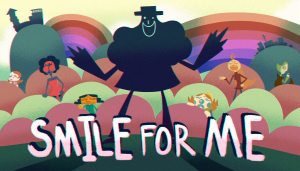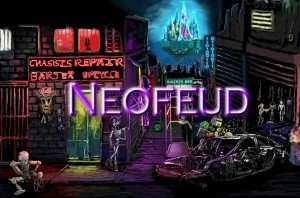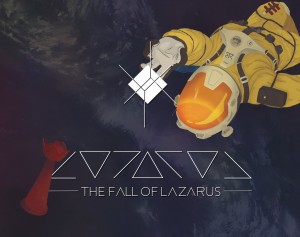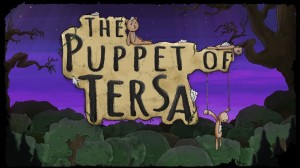Review for Smile for Me
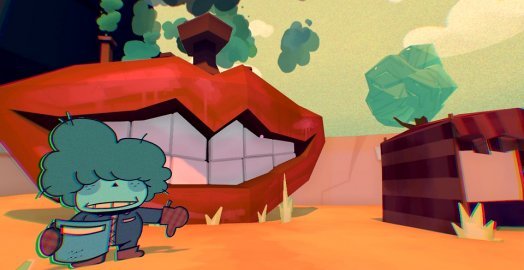
Game information
Adventure Gamers Awards
It’s not always easy to evaluate a game, especially one that’s so weird and unique that it can’t be properly compared to other titles in the genre. That’s how I feel about Yugo Limbo’s and Day Lane’s Smile For Me, a first-person ‘nod-n-shake’ adventure that merges some traditional gameplay elements with a lot of bold new ideas. The result is a refreshing experience filled with peculiar and memorable characters and a surprisingly sad story, all wrapped up in a unique presentation that can be enjoyed by any fan of adventure games.
Players assume control of a mute young flower delivery man, as evidenced by some of the characters referring to you as ‘Flower kid’ (or Flower child, or just Flower, or just kid). For whatever reason, you have taken up residence in a place called “The Habitat”, a small community somewhere in the mountains which promises that people who are sad or down on their luck can come here to feel happy again. That may sound pleasant enough on the surface, but the creator and current leader of the Habitat is a mysterious man named Doctor Habit, who rarely shows himself and only does televised announcements using a puppet look-alike during the night, whose subtitles are riddled with childish spelling errors. He is obsessed with making people smile, but everyone living in the Habitat is miserable for various reasons. It’s not your job, but apparently you have “a way with people”, so it’s up to you to make them all happy again.
Despite its premise, Smile for Me is far from simply a feel-good tale. The writing manages to maintain a good balance between quirky and sinister – quirky in the sense that a lot of tasks you end up doing and the characters you meet range from sensible to off-the-wall cartoony. You bounce between things like helping a feisty girl dress up like a superhero, “cooking” a steak made out of metal bolts and wood for a hungry lawyer, and fetching a record out of an acid pool for someone who’s hidden himself behind a wall.
While the moment to moment interactions are on the lighter side, however, the overall atmosphere is a dark one. There are security cameras everywhere, artificial staff members made of paper that refer to the Doctor as “father” with unwavering smiles, and the buildings themselves are in visible need of repair. Failing to meet the strict curfew imposed results in an extremely unnerving PSA that wouldn’t be out of place in a horror game. More ominously, the more you do for the people in the Habitat, the angrier Doctor Habit becomes, eventually addressing you directly in his nightly broadcasts.
Both light and dark moods are prominent but complement each other instead of clashing. The other people living here know Doctor Habit isn’t quite right, but are also dealing with their own personal problems that keep them from smiling. It’s all done very well, in such a way that can have you laughing one minute and feeling disturbed the next without experiencing tonal whiplash, which is impressive.
The residents of the Habitat are one of the game’s biggest highlights. Not only do they offer up witty dialogue and bizarre puzzles for you to solve, most of them have believable reasons for coming here and are grateful for your help, no matter how big or small it may be. Some of my favourites are Dallas, the hippy painter who has a crush on a photographer named Mirphy and wants to dazzle her with his art; Trencil the vampire gardener, who has lived for centuries but just wants to reconnect with his daughter; Ronbo the clown, who is going through a bad breakup; and Gillis, the towering bouncer who puts on a “bully jock” act but is actually a big softie. These are but a handful of characters in a surprisingly large cast that manages to never feel bloated, as most of them are given enough exposure to flesh out nicely. Another great aspect is that a lot of these people are connected to each other in some way, either by family, friendship or romance, which helps the group feel like a small, tightly knit community involved in each other’s lives.
The interface isn’t hard to grasp: you walk around in a fully 3D environment using either WASD or the arrow keys to move, and look around using the mouse. The left button is used to interact with items or select something, and the right to bring up your bouquet, which acts as an inventory you scroll through using the mouse wheel. The space bar can be used to skip through dialogue line by line if you’re in a rush or have already heard what someone has to say.
Since the protagonist can’t speak, the main conversational mechanic is the nod-n-shake feature. When a character asks a question, you can either quickly move the mouse up and down to indicate yes, or left and right for no. Answering yes or no to the right questions will get you far and is needed to solve a fair number of puzzles thrown your way. You aren’t punished for giving the wrong answer, thankfully, as you simply have to restart the conversation to try again. In very rare cases, either response can be correct, and it’s just a matter of how nice you want to be.
The world is moderately sized, with six major areas all connected organically without loading screens, and you’ll have full rein to go anywhere by about the fifth or sixth day. Despite the Habitat’s scale, backtracking never feels like much of an issue thanks to Flower kid’s default walking speed, which is brisk. The run option is even quicker and can help in a pinch, especially to make it back to your room before curfew.
Smile for Me’s gameplay varies in terms of puzzles. There’s plenty of “get the right item for the right person” fetch quests, but there’s also a good mix of environmental obstacles in your path, some that include a slight emphasis on the day-night cycle. Near the beginning, your mooing, talking bed gives you a stopwatch-type item that can be used to speed up time to suit your needs. A couple time-sensitive puzzles involve the sunlight shining on particular places at specific times of the day. These are used sparingly, but they’re executed well enough to become a memorable part of the journey. Other interesting tasks include distracting Mirphy the photographer so you can get a photo of her butt (which she asks you to get), tricking Trencil into confessing he’s a vampire to some conspiracy nut, and indulging in a borderline psychotic child’s wishes and punching 20 different people.
You have limited time to act each day before either heading back to your room to make curfew or being forced to end the day when you pass out from staying out way too late. This works because different characters and areas are unlocked as days pass, so as to not overwhelm you all at once. It also allows for better narrative progression, as the more you help people, the livelier the place becomes. More and more residents show their faces when they see that things are looking up – while Doctor Habit gets angrier each passing night.
There isn’t really any point where the challenges become too difficult or too cryptic to decipher, as it’s clear the puzzles want you to have fun with the hijinks rather than tickle your brain too hard. The other characters always give clear hints or instructions on what you need to do to help them, and they can be talked to again at any time if you forget. The unconventional solutions to both mundane and absurd problems match the script’s humor to a tee. They add to the unsettling yet wacky atmosphere where nothing feels “right” but you can’t help but laugh as you help these isolated people from making things worse.
The presentation, much like the writing, is another highlight, as it displays this world with a unique art style that invokes feelings of disquiet and absolute lunacy, which is fitting for a small community locked away in the mountains and run by what is essentially a madman. Everything looks like it’s made of paper or cut from cardboard. The pastel environments and even people are flat and angular, lacking things like proper 90-degree angles or perfectly round shapes, with only a few exceptions. It’s an interesting aesthetic that’s pleasing to the eye and doesn’t ever feel cluttered, despite the mishmash of weird shapes.
The six major areas to explore comprise the apartment floor where your room is situated, the lobby that connects to most of the other locations, a maintenance section that includes the sewers, a carnival, a nightclub called “The Lounge”, and a roof terrace. Each zone looks very distinct from one another and usually has one to three major colours depending on the mood being conveyed, such as the main building interior’s sickly greens and blues, accentuating the depressive residents, the hip nightclub’s reds and purples to reflect the more jovial characters inside (for the most part), or the carnival’s oranges and bright greens, as it’s split between both dour and cheerful elements.
The character models aren’t animated, per se, but they can quickly shift between poses for different emotions or actions and are always facing the player (something that’s brought up as a joke at one point). The design style here resembles pop art, with a lot of straight edges, abstract Picasso-like faces and unconventional hair and skin tones. This ensures every character looks unique, which is good considering there’s 23 of them altogether (including Doctor Habitat). A cute detail is that characters related to each other share common elements, like Trencil and his daughter Nat having similar hair, or Parsley the lawyer and his father both wearing black and red. Each person has a specific happy model once you help them, and it’s satisfying to see everyone in a good mood when you succeed.
Objects that appear in your inventory fall under two visual categories: either drawn in an equally stylized manner or real photos of things that are slightly altered with new details, like blue lips as a “kiss” item (because the person who kissed you has a blue coloured face) and a megaphone with a smiley face stuck onto it. While that may sound jarring given the flat paper-like look overall, the discrepancy adds to the illogicality of it all. The odd photo altered into an original design, like an owl with long legs (called the “fowl”), is creepy enough to fit the already inhuman atmosphere.
The audio is just as distinctive as the art, with each area having a different theme ranging from jazz in the Lounge to a more synth-like and emotionless score in the residential area, or even nothing at all besides ambient sounds of water dripping and wind blowing in the back area behind the building that has been chained off. The two standout pieces to me are Flower kid’s room, which has a calming acoustic guitar track, and the Lounge’s piano-heavy music, both of which sound great. There are also a few bonus tunes that can be played on the club’s jukebox that are worth at least a listen (my personal favourite is the dance number called ‘Eleven Cities Under’). Every item and environmental object also has its own specific effect that plays each time you use it. My only complaint about the sound design is the pause between music tracks switching if you quickly run between areas. It isn’t a big deal by any means, but a few seconds of dead silence are definitely noticeable.
Dialogue isn’t spoken but there is voice acting in a sense, in that each character has a collection of jumbled verbal sounds (that could well be real words reversed or edited) that play to create the notion of speech. It’s clear that some are just the same person pitched either up or down depending on who’s talking, but thankfully no two characters sound identical, and this too adds to the general weirdness. I didn’t have any issue with this pseudo-language, but some players might find the decision annoying and there’s no way to disable it without turning off all the sound effects as a whole.
Smile for Me isn’t resource-heavy so it shouldn’t be hard to run, and I didn’t experience any kind of noticeable bug or glitch during my entire four-hour playthrough. The technical polish caps off a unique adventure game that manages to juggle a strong yet strange presentation, a combination of experimental and familiar gameplay elements, and an ominous but overall heartwarming and memorable narrative that both new and veteran adventure gamers can enjoy.




